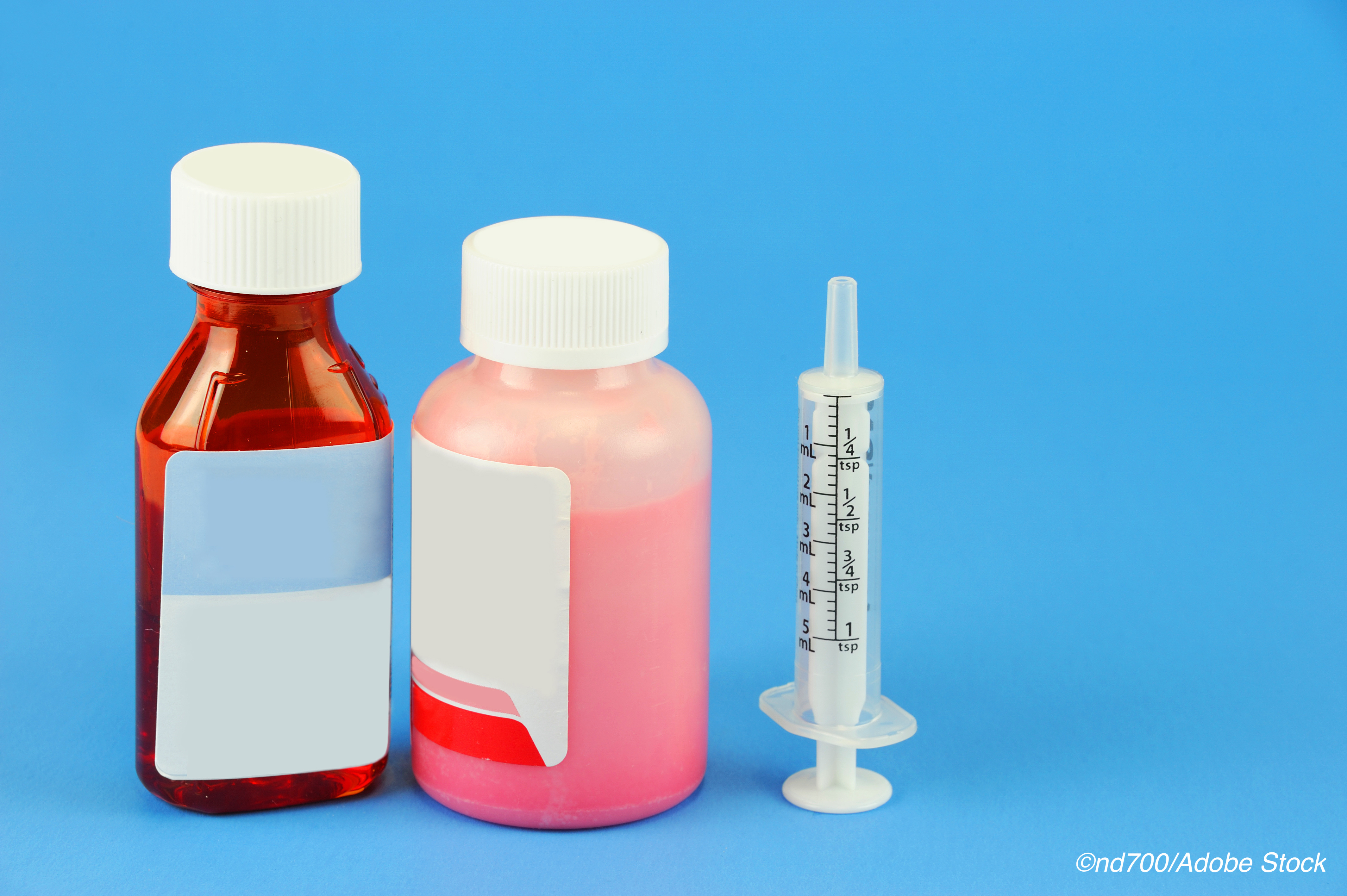
Short-course amoxicillin for children with community-acquired pneumonia (CAP) who don’t need to be hospitalized was comparable with standard 10-day treatment, researchers reported.
In the SAFER trial of five-day high-dose amoxicillin for outpatient pediatric CAP, clinical cure was seen in 88.6% (n=101/114) of the intervention group and in 90.8% (n=99/109) of the control group in a per-protocol (PP) analysis, for a −0.016 risk difference (97.5% confidence limit −0.087), according to Jeffrey M. Pernica, MD, MSc, of McMaster University in Hamilton, Ontario, and co-authors.
“In this era of widespread antimicrobial resistance, which may well worsen as a result of the coronavirus disease 2019 pandemic, it is important that antibiotic treatment durations for common infections are as short as possible and based on evidence rather than custom,” they wrote in JAMA Pediatrics.
Two 2020 studies found that antibiotic prescribing rates decreased significantly in almost all U.S. pediatric ambulatory settings post-Covid-19, as did the number of overall patients dispensed antibiotic prescriptions. In addition, the “Choosing Wisely” campaign — including antimicrobial therapy stewardship — has grown globally since its inception in 2012, although a 2018 study reported that the “Choosing Wisely Canada” effort “does little to address the clinical reasons for unnecessary medical care [and] is unlikely to have a major influence on unnecessary medical care.”
But “shortening the recommended duration of antibiotic therapy for pediatric pneumonia does not prevent clinicians from prescribing for a longer duration when needed,” pointed out Katherine E. Fleming-Dutra, MD, of the CDC in Atlanta, and co-authors, in an editorial accompanying the study.
SAFER findings add to “a growing body of evidence that the optimal duration of antibiotic therapy for CAP is shorter than what is traditionally given,” they wrote, noting that “a recommended duration is a behavior change tool: giving a default option nudges a clinician to use that duration and helps change practice.”
SAFER was a two-center randomized clinical trial conducted in Canadian emergency departments (ED) from August 2016 through December 2019. The trial was designed to determine if five days of high-dose amoxicillin plus five days of placebo (intervention arm) for CAP was linked with non-inferior rates of clinical cure versus 10 days of high-dose amoxicillin (control arm). The main outcome was the rate of clinical cure at 14 to 21 days in both arms.
Eligible participants were age 6 months to 10 years, with a fever within 48 hours, respiratory symptoms, chest radiography findings consistent with pneumonia as per the ED physician, and a primary diagnosis of pneumonia. All participants in the study were blinded to treatment assignment, according to the authors.
Ultimately, 281 children (median age 2.6 years; 57.7% boys) were enrolled and 89.7% had outcomes documented. Pernica’s group noted that 10.3% of the participants did not return for complete follow-up, which was a study limitation, and “[h]ad we not had losses to follow-up, we might have had sufficient power to demonstrate noninferiority of the primary outcome in the PP analysis.”
However, in an intention-to-treat analysis, they reported clinical cure at 14 to 21 days in 85.7% of the intervention group and in 84.1% of the control group for a 0.023 risk difference (97.5% CL −0.061).
Other study limitations included the fact that the authors could not definitively establish the presence of bacterial pneumonia as blood sampling for children with non-severe CAP is actively discouraged.
Also, the results may not be generalizable to children diagnosed with CAP in low- and middle-income countries, according to the authors. A 2010 review noted that “the estimated incidence of childhood hospitalization due to CAP is 8.7% of all cases of CAP in developing countries and 0.3% in the developed world. However, it is not possible to compare the two because the criteria used to define CAP and its severity, and the prevalence of risk factors for the development of severe CAP, are very different,” while a 2017 review highlighted “a global heterogeneity in the antibiotics prescription for pediatric CAP, with application of guidelines varying from 0% to more than 91% and with important differences even within the same country.”
Still, the authors advised that “Clinical practice guidelines should consider recommending five days of amoxicillin for pediatric pneumonia management in accordance with antimicrobial stewardship principles.”
Fleming-Dutra’s said results from SAFER, along with the ongoing SCOUT-CAP trial — from which some results were released in December 2020 — will further “the difficult but necessary work of preserving the usefulness of our current antibiotic arsenal.”
-
Five days of antibiotic therapy in an outpatient setting had comparable rates of clinical cure compared with standard 10-day therapy in children with community-acquired pneumonia (CAP).
-
Short-course therapy for pediatric CAP not requiring hospitalization should be considered for treatment guideline inclusion.
Shalmali Pal, Contributing Writer, BreakingMED™
SAFER was supported by Hamilton Health Sciences/New Investigator Fund/Early Career Award, the PSI Foundation, and Pediatric Emergency Research Canada.
Pernica reported support from bioMerieux SA. A co-author reported relationships with Avibr, Sunovion Pharmaceuticals, and the World Health Organization.
Fleming-Dutra and co-authors reported no relationships relevant to the contents of this paper to disclose.
Cat ID: 138
Topic ID: 85,138,500,728,791,730,138,139,192,152,195,925


